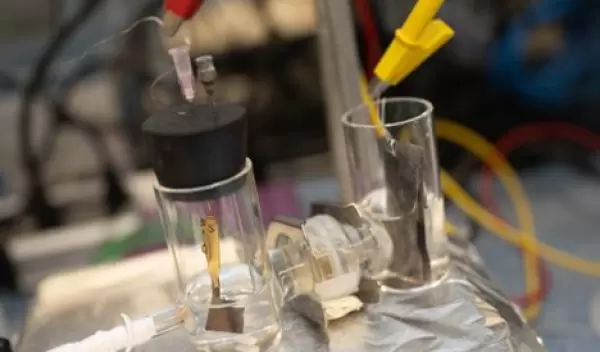
Wastewater treatment process produces "greener" ammonia
Access to a safe and steady supply of water is a requirement for all life on the planet. How to manage and sustain this resource is a persistent consideration, and managing ammonia-containing wastewater is a pressing concern. Could nanotechnology provide a way to treat wastewater and produce ammonia with less impact on the environment?
Engineers based at Rice University working on research partially funded by the U.S. National Science Foundation have developed an electrocatalyst of ruthenium atoms on a mesh of copper nanowires to extract ammonia from wastewater.
The high-performance electrocatalyst can remove ammonia -- commonly used as an industrial fertilizer -- from low levels of nitrates in industrial wastewater and polluted groundwater with close to 100% efficiency. The team published the research in Nature Nanotechnology.
"We fulfilled a complete water denitrification process," said a lead author of the study, Feng-Yang Chen. "With further water treatment of other contaminants, we can potentially turn industrial wastewater back to drinking water."
The researchers innovated the ruthenium electrocatalyst process with the mesh of copper nanowires, effectively suppressing hydrogen production.
"We knew that ruthenium was a good metal candidate for nitrate reduction, but we also knew there was a big problem, that it could easily have a competing reaction, which is hydrogen evolution," Chen said. "When we applied current, a lot of the electrons would just go to hydrogen, not the product we want."
The team borrowed a concept from other fields like carbon dioxide reduction, which uses copper to suppress hydrogen evolution, according to corresponding author Haotian Wang said. "Then we had to find a way to organically combine ruthenium and copper. It turns out that dispersing single ruthenium atoms into the copper matrix works best."
The efficient process is scalable and could significantly reduce carbon dioxide emissions from industrial ammonia production.
Wang concluded, "While we understood that converting nitrate wastes to ammonia may not be able to fully replace the existing ammonia industry in the short term, we believe this process could make significant contributions to decentralized ammonia production, especially in places with high nitrate sources."


